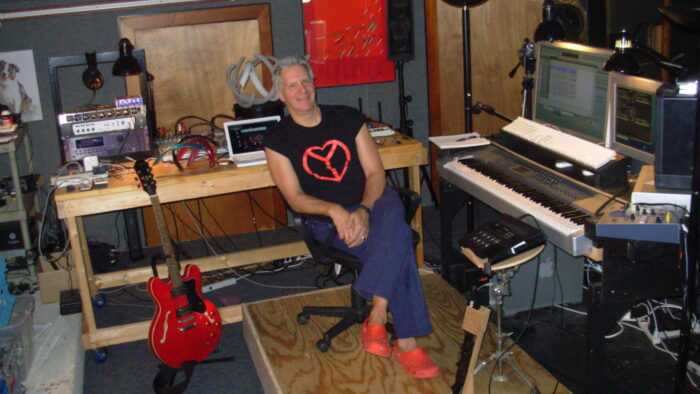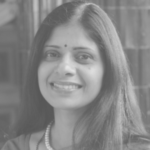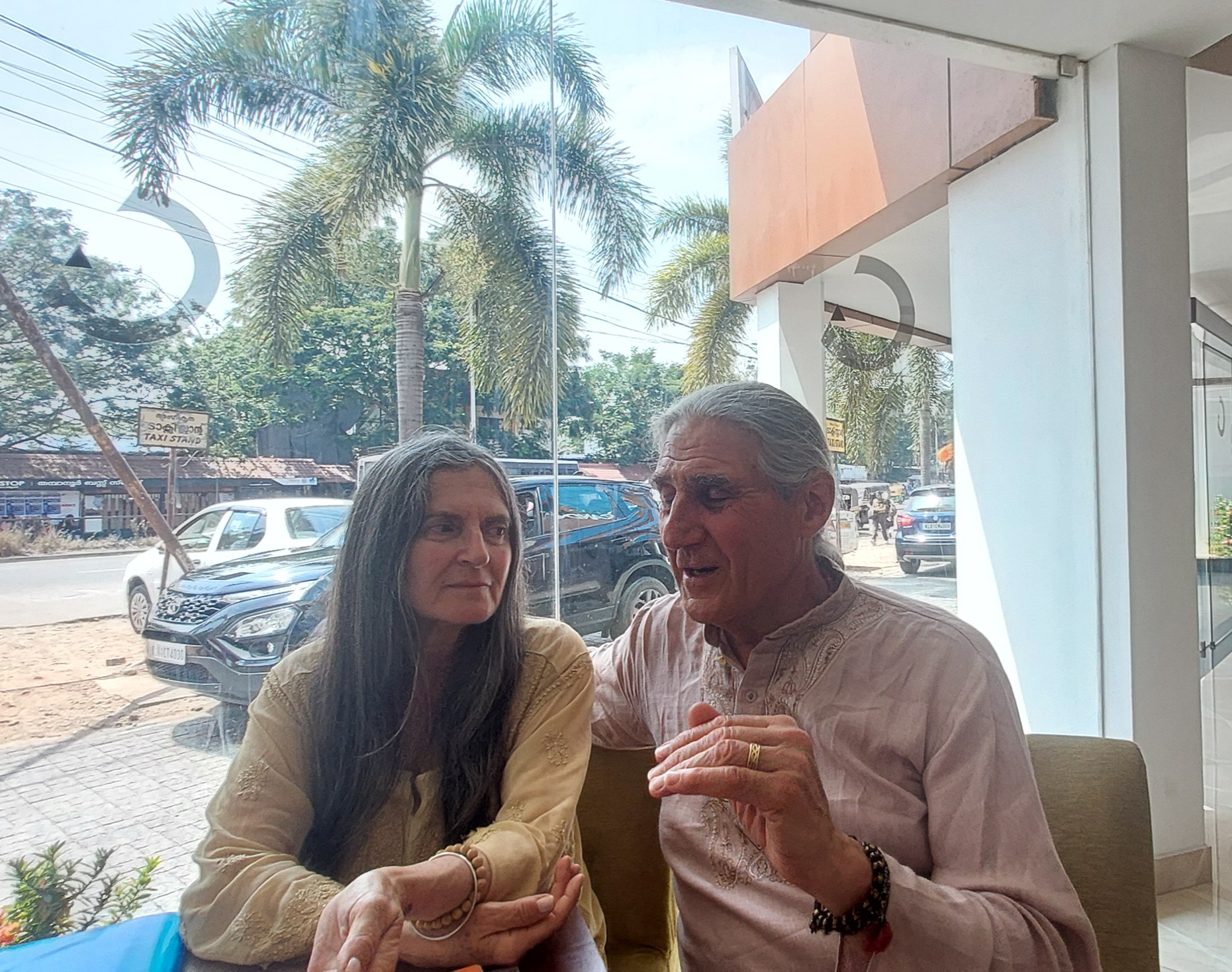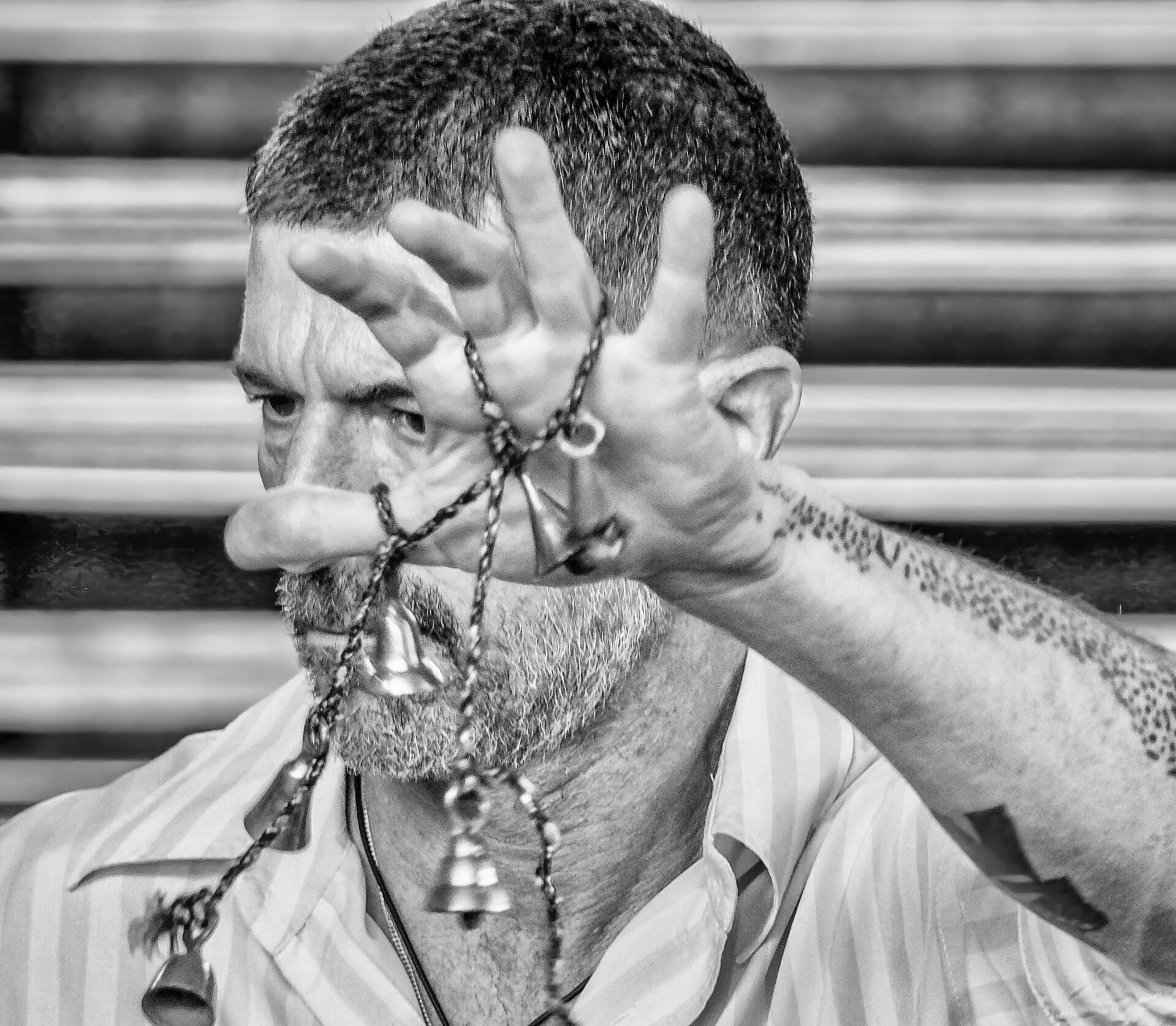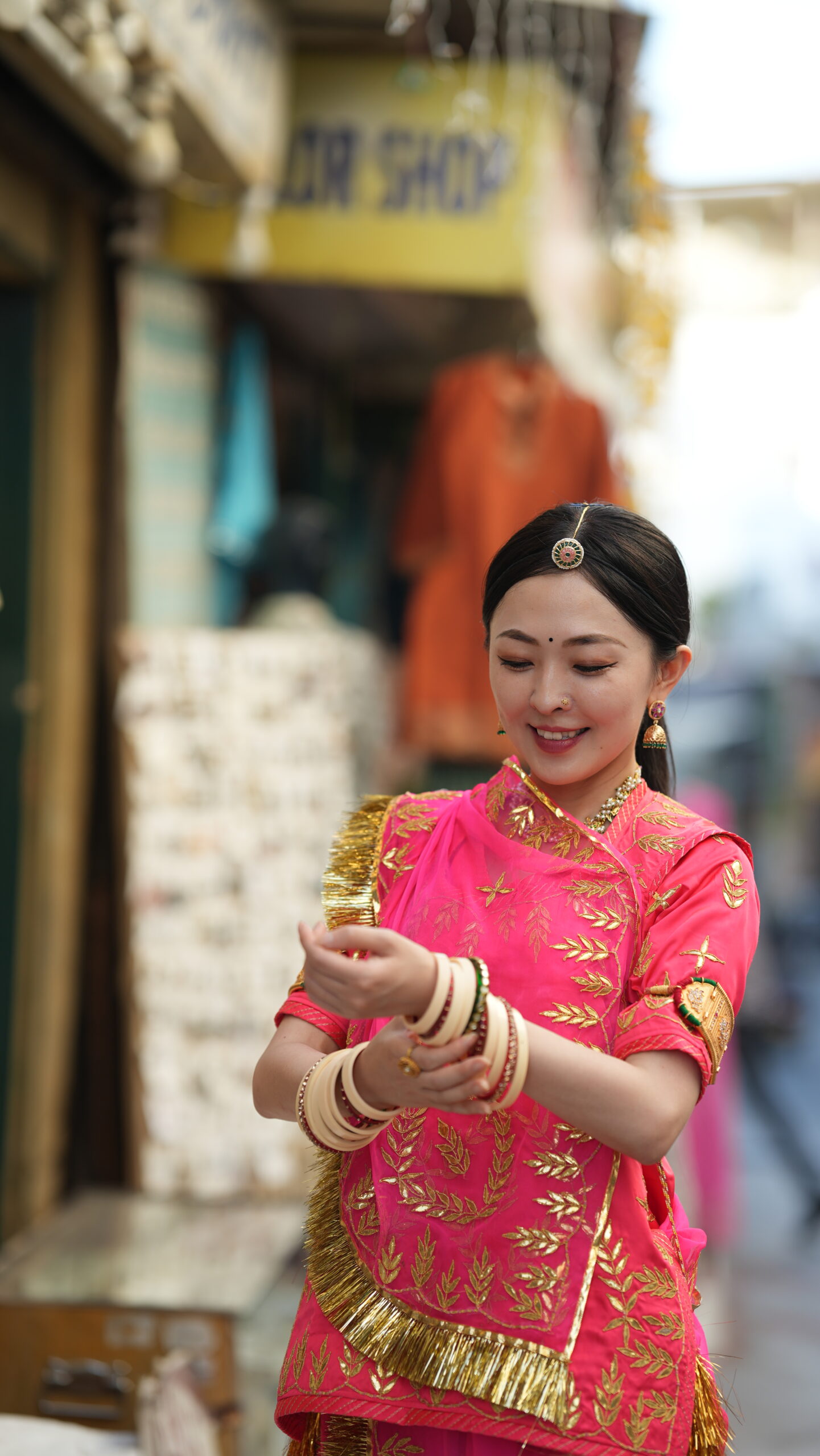Christopher Janney’s life is an intricate weaving of architecture, music, Eastern philosophy, and a deep awareness of the present moment. An artist, musician, and visionary, his work blurs the boundaries between disciplines and seeks to reveal the invisible - the pulse of life, the energy of the unmanifest, and the creative spark that he believes is the closest thing to God.
Ramdass and the Search for Meaning
Janney’s connection with Eastern thought began in the 1970s, although the seeds were planted earlier. “Ramdass (disciple of Neem Karoli Baba) was at Harvard in the late 60s, around the same time I was in college,” he recalls. “In the 1970s I became interested in Eastern philosophy and meditation. I practiced Transcendental Meditation for many years - it was a Western introduction to Eastern philosophies, and I loved it for that. But I kept looking around and searching.”
He already knew about Be Here Now, the book Ramdass had written. “Here was a person who was very Western - a Western academic - but with a tremendous sense of humour. The way he recounted his stories and explained his philosophy was from a Western perspective about Eastern thought, and that intrigued me. I have many, many tapes of his recordings. I listen to them over and over and never hear them the same way twice. He was very instrumental in me understanding Eastern philosophy and different Indian concepts.”
The first time Janney met Ramdass was at a party in Cambridge. “I was at MIT, he was no longer at Harvard, but his parents lived in town. Whenever he was lecturing in Boston, I would go.” One particularly memorable encounter happened after Ram Dass had suffered a stroke. “They made a movie about him called Fierce Grace. They were presenting it at the Boston Museum of Arts, and he was there to talk about it. Afterward there was a line of us who could speak to him briefly. His left side was paralysed, and he was in a wheelchair, but he was all smiles.”
Janney shared with Ramdass a story from the 1970s, when he was living in a loft in New York after college, practicing music. “I built an eight-by-eight-foot pyramid - big enough to sleep in and meditate in. Many days I’d come home, put on a six-CD set called The Evolution of Consciousness - the first five sides were his philosophy and life told in his humorous, insightful way, and the sixth side was a chant. I would make dinner while listening, and when it got to the chant, I’d go sit in the pyramid, meditate, and chant with the recording. I told him, ‘You are so influential. I made this pyramid, I slept in it, meditated in it.’ He couldn’t speak that fast, so I turned away. But then he said, ‘Wait, wait.’ Because he couldn’t speak loudly, I leaned in, and Ramdass whispered, ‘See you in the pyramid.’”
Listening, Walking, and Changing Consciousness
Janney believes every path evolves individually. “There are people who listen to Ramdass and they don’t hear anything. Ramdass himself says two people in the same room in the same moment - one person says, ‘I didn’t hear a thing,’ the other says, ‘That is what I have been waiting for.’ It’s got a lot to do with where your consciousness is at.”
He still listens to The Evolution of Consciousness, which first came out in 1973. “In the last 50 years I must have heard it maybe a thousand times. No exaggeration. I can practically recite the whole thing. But I still hear new things. That means my consciousness is changing. Some people listen and say, ‘I got that and I’m moving on.’ I often take long walks, 8,000–10,000 steps a day, near the lake where we live, and I just walk with Ramdass. Same thing I heard yesterday, last week, last month, last year - it still centers me and helps me focus. Many times I’ve sat on a bench after a walk and meditated. I’m still very interested in him - in what he says and what he does.”
Although Ramdass is no longer in the body, Janney feels his spirit is very much present. “I write music, I design buildings, I make objects - after 50 years I feel creativity is the closest thing to God. Performing HeartBeat is one of the closest things to God. I never do it the same way twice. I’m very open to structured improvisation, because I think that’s very much capturing the spirit of the moment. Through Ramdass, I learned a lot about non-Western ways of understanding the present - and as a musician, especially when you get together with others, it’s about being present in the moment. I’m on my path, I don’t know where it’s going to lead. We have to eat, we have to make some sort of a living - but creativity is the closest thing to God. To make things is to be close to the life force that made everything.”
The Manifest and the Unmanifest
Janney speaks often about the manifest and unmanifest energies. “I am very aware of the abstract energy and how it manifests broadly. Sometimes it comes out as design, sometimes as music. At some moments I can feel things come, and I surrender - I wonder what it’s going to be. In my world as a visual artist and musician, I have little tricks to fool myself. When I’m working on a piece of music, I think, ‘What does this look like?’ That gets me out of idioms and clichés. When I’m drawing or creating a sculpture, I ask, ‘What does this sound like?’ That keeps me from just thinking about the visual - it helps me ride the energy in a fresh way. I’m always trying to find links between the visual and the musical.”
Heartbeat: The Drum Inside the Body
Janney’s fascination with rhythm began at age 14, when he started playing drums. “Even back then, it was a kind of trance-like experience. In 8th grade, rock and roll came to America - Elvis was here - and I was lucky to attend a school where we had music and art every day. I had a fantastic music teacher. I played in rock and roll bands all through my teenage years.”
In his early 20s, he was drawn toward meditation. “In 1975, I had an offer to go to MIT to be part of an experimental programme adjunct to the architecture school, called the Center for Advanced Visual Studies. The director was interested in artists who worked with technology - not figuratively, but abstractly. Before joining MIT, I thought I’d be a drummer for Broadway shows, but MIT changed everything. Here I could build anything I could conceive of.”
Two years into the program, Janney began to think about the heartbeat as an instrument. “Everyone has a drum inside their body - the heartbeat. Maybe I could amplify it outside the body and make it part of a performance. I’d always worked with dancers - architecture is moving through space - so I started thinking about building a wireless telemetry device that could be worn by a dancer.”
In the late 1970s, this was uncharted territory. “I kept asking people around MIT how to make it. There was a group doing research on medical telemetry devices — now it’s second nature, but then nobody was doing it. The first time we turned it on, there was a lot of noise, like what mothers hear before their babies are born. The heartbeat was there, but it didn’t sound right, so I had to have a special audio filter made. I went to the acoustical engineering department and told them, ‘It has to be clean.’”
When the system worked, the results were powerful. “It’s one thing to see it on videotape, but live, when you see a dancer moving and hear her heart rate shift with each movement - it’s profound. Then I added other musicians, like tabla and flute players. The dance is a structured improvisation. I don’t tell the dancer how to move - we work together to find movement they’re comfortable with, and then we tweak it. It’s the opposite of ballet - you have to be in the moment and own what you’re doing.”
The most recent dancer he has worked with is Indian-American artist Mayuri Bhandari, a graduate of a yogic program. “She’s perfect - a very good dancer and an ice skater. She understands the philosophy behind the work.”
Janney still dreams of bringing the heartbeat performance to India. “It haunts me to this day. The heart is a sophisticated pump - what movement images can you create from that? We build a vocabulary around it. It’s not just performance — it’s about revealing the unseen.”

